CES 2024 is here! The TechCrunch team is in Las Vegas this week to take in all of the action and decipher what it means to you. You already know what we’re expecting, so sit back, relax and stay tuned throughout the week as we bring you the products, announcements and startup news that you need to know.
Everything from Nvidia and Sony to the weirdest discoveries and useful AI has been revealed. Everything revealed so far, from Nvidia and Sony to the weirdest reveals and helpful AI
Kicking off the first day were some bigger announcements from companies, including Nvidia, LG, Sony and Samsung. Those livestreams have ended, but you can watch most of their archives and catch up right here. And with the event still ongoing, and the show floor open, here’s how you can follow along with our team’s coverage.
Thursday, January 11
Matter-compatible devices
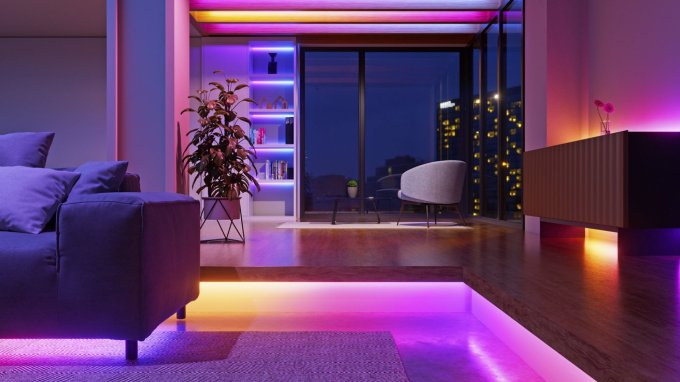
Nanoleaf’s new Matter-compatible indoor light strips. Image Credits: Nanoleaf
With all of the collaboration — and CES announcements — between top electronic companies to get Matter, the smart home networking protocol, off the ground, 2024 could be Matter’s best year yet. Kyle Wiggers has a list of the devices to show us why.
From voice synthesis to safer phones for kids, here are some actually helpful AI products at CES

Image Credits: Louise
After seeing all the examples of artificial intelligence baked into the booths of CES, Devin Coldewey put together a list of gadgets, products and software he thought actually might do some good.
Is hydrogen making a comeback?
Harri Weber and Sean O’Kane discuss the examples of hydrogen-power vehicles (TechCrunch+ gets into that too) on the CES floor and why it’s now a popular alternative energy after previously fizzling out. Or, they write, “is it yet another example of companies making promises at CES that they won’t be able to keep?”
Polestar makes promises
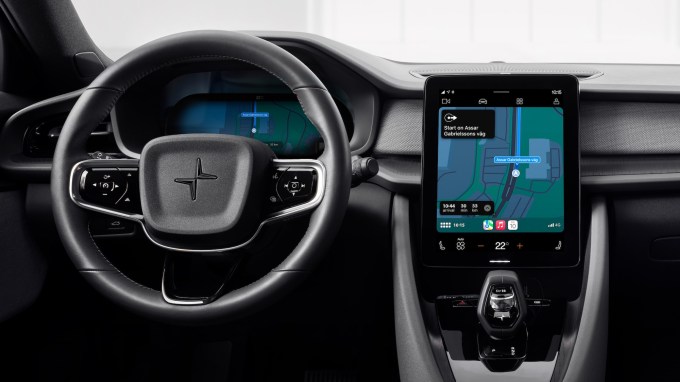
Image Credits: Polestar
Kirsten Korosec caught up with Polestar CEO Thomas Ingenlath who discussed the integration of the Google built-in, a branded product that embeds Google apps and services directly into the company’s EVs. Don’t worry, Ingenlath says the EV maker isn’t dropping Android Auto or Apple CarPlay as a result.
Can’t take my eyes off of you in video calls
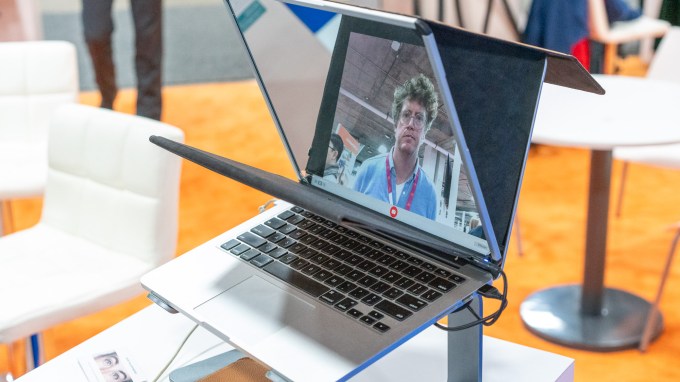
eyeQ shown off at CES 2024. Image Credits: Haje Kamps (opens in a new window)/ TechCrunch
With cameras in different places, it’s often difficult to maintain eye contact with someone on video calls. There is AI for that, however, one company is taking a different approach. EyeQ is developing a device that attaches to your laptop and, through the use of a mirror, enables you to maintain eye contact with the person you’re speaking to, even while looking at your screen.
From TechCrunch+: Hyundai talks hydrogen, Siri needs to get smarter

A Hyundai Motor Co. Nexo fuel cell electric vehicle displayed at the 2021 Ulsan International Hydrogen Energy Exhibition & Forum (H2WORLD) in Ulsan, South Korea, on Wednesday, Nov. 10, 2021. South Korea will cut prices of liquefied natural gas needed to produce hydrogen for fuel cell vehicles for three years to encourage usage of the technology. Photographer: SeongJoon Cho/Bloomberg via Getty Images
As Tim De Chant notes, Hyundai has invested in hydrogen fuel cells for decades, but it has also been one of the more successful legacy automakers at navigating the electric transition. So it’s odd now that a company with so much momentum on its side would throw a hydrogen Hail Mary at CES.
Meanwhile, Haje Jan Kamps had a lot of time to contemplate how Siri works while driving to Las Vegas. He shares some areas where Apple’s voice assistant, Siri, is being left in the dust by its competitors.
Whispp gives a voice to people who can’t speak

Image Credits: Whispp(opens in a new window)
Whispp is working to change the game for individuals with speech disorders and voice disabilities, bringing voice boxes into the current millennium with its groundbreaking AI-powered assistive speech and phone-calling app. The company launched its newest phone-calling feature that converts whispered and vocal cord-impaired speech into a user’s natural voice in real time.
Rownd designs a better tabletop CNC lathe
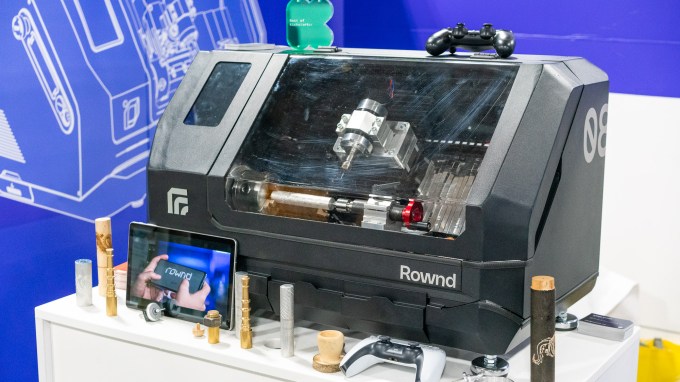
Rownd CNC lathe at CES 2024 in Las Vegas. Image Credits: Rownd
Haje Jan Kamps was keeping tabs on Rownd’s new tabletop CNC lathe and got to see it in action this week. He writes that what sets Rownd Lathe apart is not just its relatively affordable hardware (the machine retails at around $5k) but the accompanying software that democratizes the design process, enabling beginners to easily create or utilize pre-made designs from the open-source Rownd Library. Watch it craft a chess pawn.
Wednesday, January 10
Zoe Care gives another take on fall detection

Zoe Care smart plug. Image Credits: Zoe Care
Devin Coldewey found what Zoe Care was doing in the area of fall detection and elderly autonomy interesting. The company uses existing Wi-Fi signals (and the way our bodies change how Wi-Fi reception works) to detect humans and their activities.
Unlike the Serenity desktop fall detection network we discussed earlier this week, Zoe’s device doubles as a smart plug, and uses a sensor to gather and analyze Wi-Fi signals. If a fall is detected, these signals are translated into alerts on a mobile application. Covering up to 800 sq. ft., just one device can secure multiple rooms or even an entire floor, making it an efficient, cost-effective solution.
WTF is a ‘software-defined vehicle?’
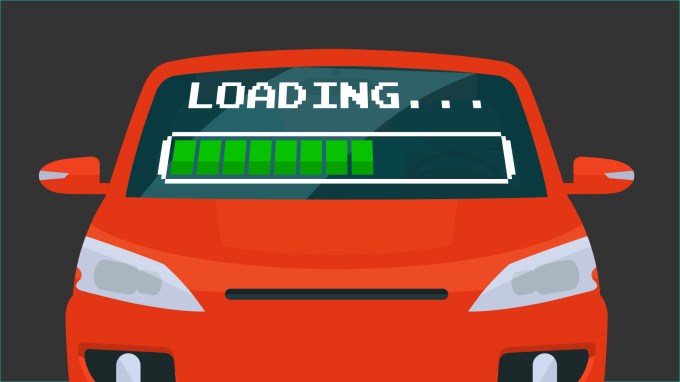
A red car illustration with a loading bar on the windshield. Image Credits: Lyudinka/Getty Images (modified by TechCrunch)
That’s the question Harri Weber set out to answer after hearing the phrase uttered all over the CES floor. In it’s most simplest definition, it’s a vehicle defined by software. However, as Harri spoke with various experts, we learn the term can mean various things. Go inside the journey to find out why this is such a popular automotive buzzword.
The weirdest tech of CES 2024 (so far)
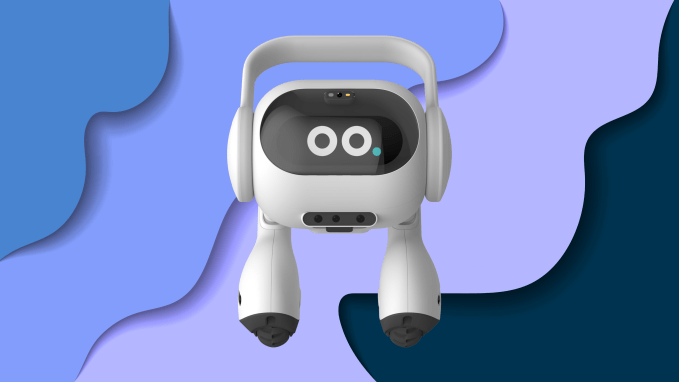
Image credits: LG
One thing is consistent throughout every CES: weird and unexpected gadgets and gizmos appear from unexpected places. We have a rundown of some of the most noteworthy products and services here, which include expensive binoculars with birdwatching AI, voice-absorbing muzzles, pay-as-you-go bathroom access and a router that tries to fit your aesthetic.
$2,000 earbuds, silent speech and AI-powered wearable jewelry
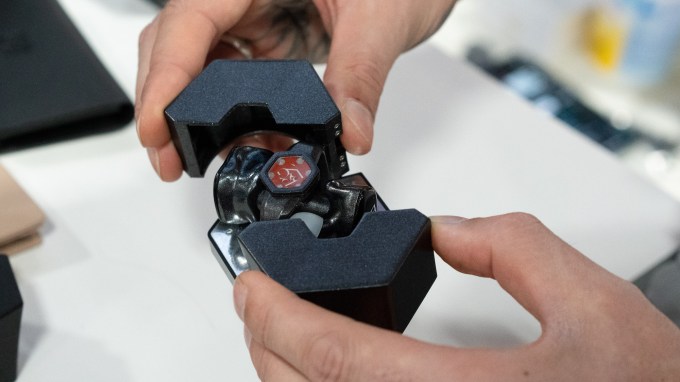
Image credits: Haje Kamps / TechCrunch
Beyond the outright strange products and platforms, there are some hidden gems amid the big booths and name brands at CES. Our own Haje Jan Kamps has highlighted several already that stand out from the crowd. He gave Breggz’s $2,000 earbuds a listen and discovered they actually deliver on their price point for audio perfectionists. He took a look at Augmental’s impressive ambitions to create accessible interfaces that can accommodate for voiceless communication. And he explored Nowatch’s purposeful fitness tracker that uses AI to keep you aware of your health goals without overly stressing you out.
Tuesday, January 9
Hyundai shows off its eVTOL, air taxi ambitions
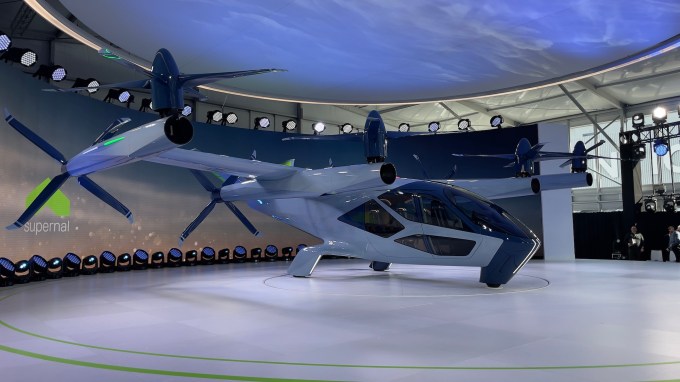
Image Credits: Kirsten Korosec
Supernal’s electric vertical takeoff and landing (eVTOL) aircraft got a showcase from its parent company Hyundai Motor Group on the ground in Las Vegas, as the so-named S-A2 moves closer to its planned 2028 launch for shuttling passengers. Head here for a full rundown on the aircraft, and the challenges in expanding airborne mobility.
This delivery bot handles stairs with ease
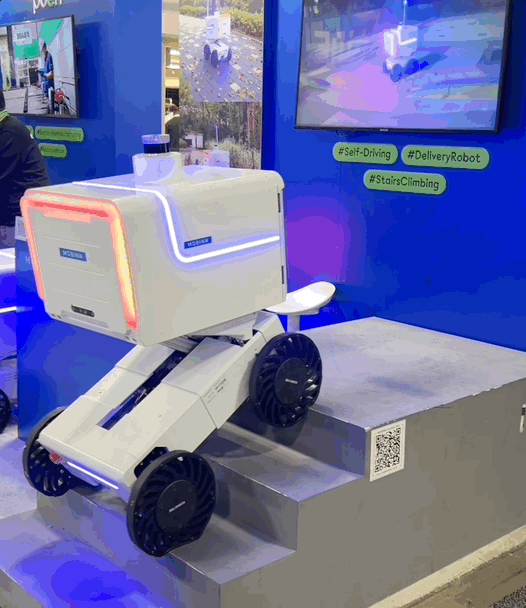
Image Credits: Devin Coldewey / TechCrunch
Mobinn, a new spinoff from Hyundai, is taking to CES to show off how its new delivery robot can use its flexible wheels to navigate stairs and changes in elevation to drop off deliveries, with tests already being conducted in Korea. Climb aboard the full story here.
Walmart debuts AI-powered tools, features and a drone
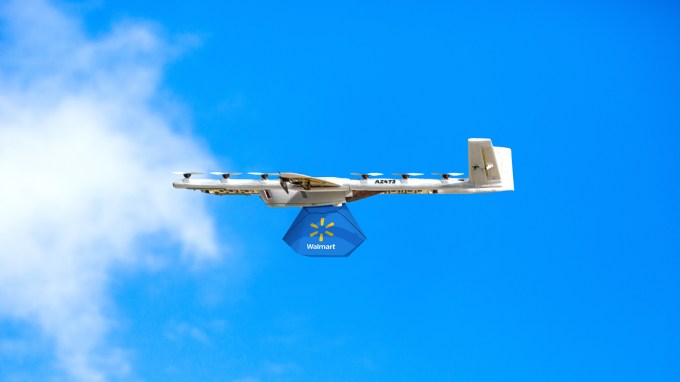
Image Credits: Walmart
Walmart president and CEO Doug McMillon shared some new technologies the retail giant has been working on, including augmented reality (AR), drones, generative artificial intelligence, and other AI tech meant to improve the shopping experience for customers. Within the presentation were some new tools for managing product search and replenishment and a new beta AR social commerce platform called “Shop with Friends.” Get the scoop on all of the new products.
OneCourt lets those who are blind ‘see’ the game
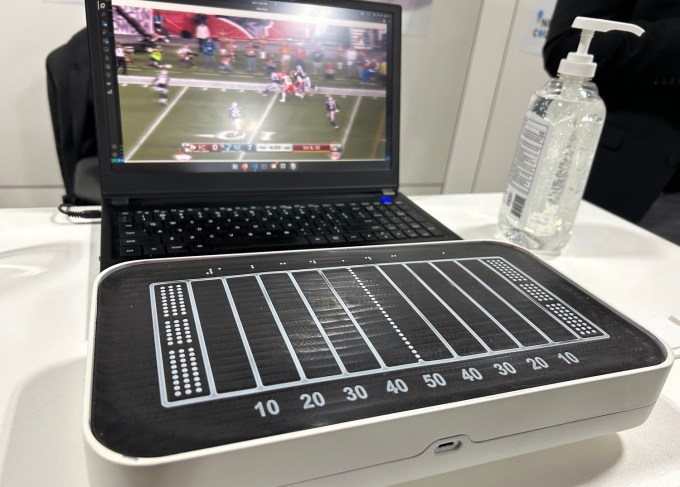
Image Credits: Devin Coldewey / TechCrunch
Put this in one in the “thoughtful” category. OneCourt, a startup founded by recent University of Washington graduates, debuted a lap-top miniature field that enables someone who is blind or with low vision feel the position of sports players and the ball in near real time. The OneCourt team takes this information and transmits it to a haptic display with a touchable cover imitating the pitch or field lines. See how it works.
rabbit jumps at the chance to explain how its r1 is different from other virtual assistants
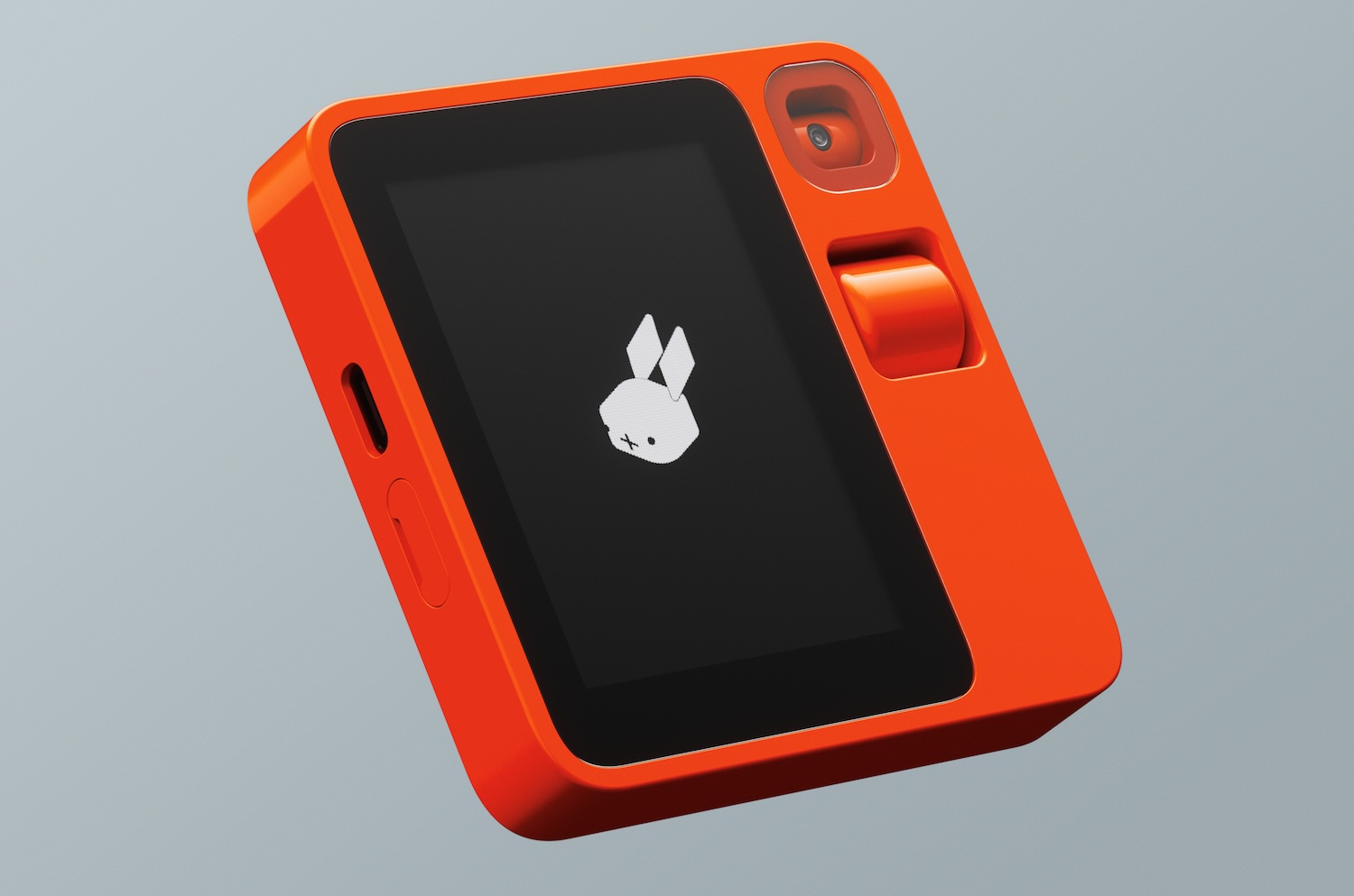
Image Credits: rabbit
Devin writes that the idea behind the $200 rabbit r1 is simple: “it lets you keep your phone in your pocket when you need to do some simple task like ordering a car to your location, looking up a few places to eat where you’re meeting friends, or finding some lodging options for a weekend on the coast. Instead of pulling out your phone, unlocking it, finding the app, opening it, and working your way through the UI (so laborious!), you pull out the r1 instead and give it a command in natural language.” Now hop over to the story for more.